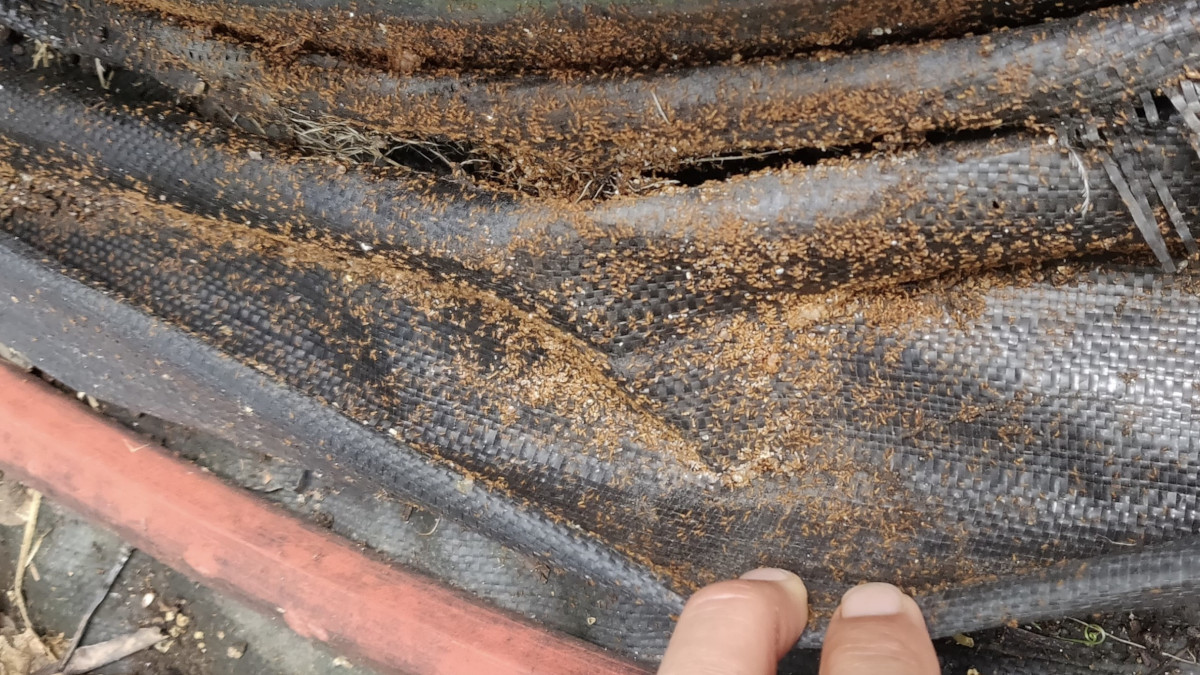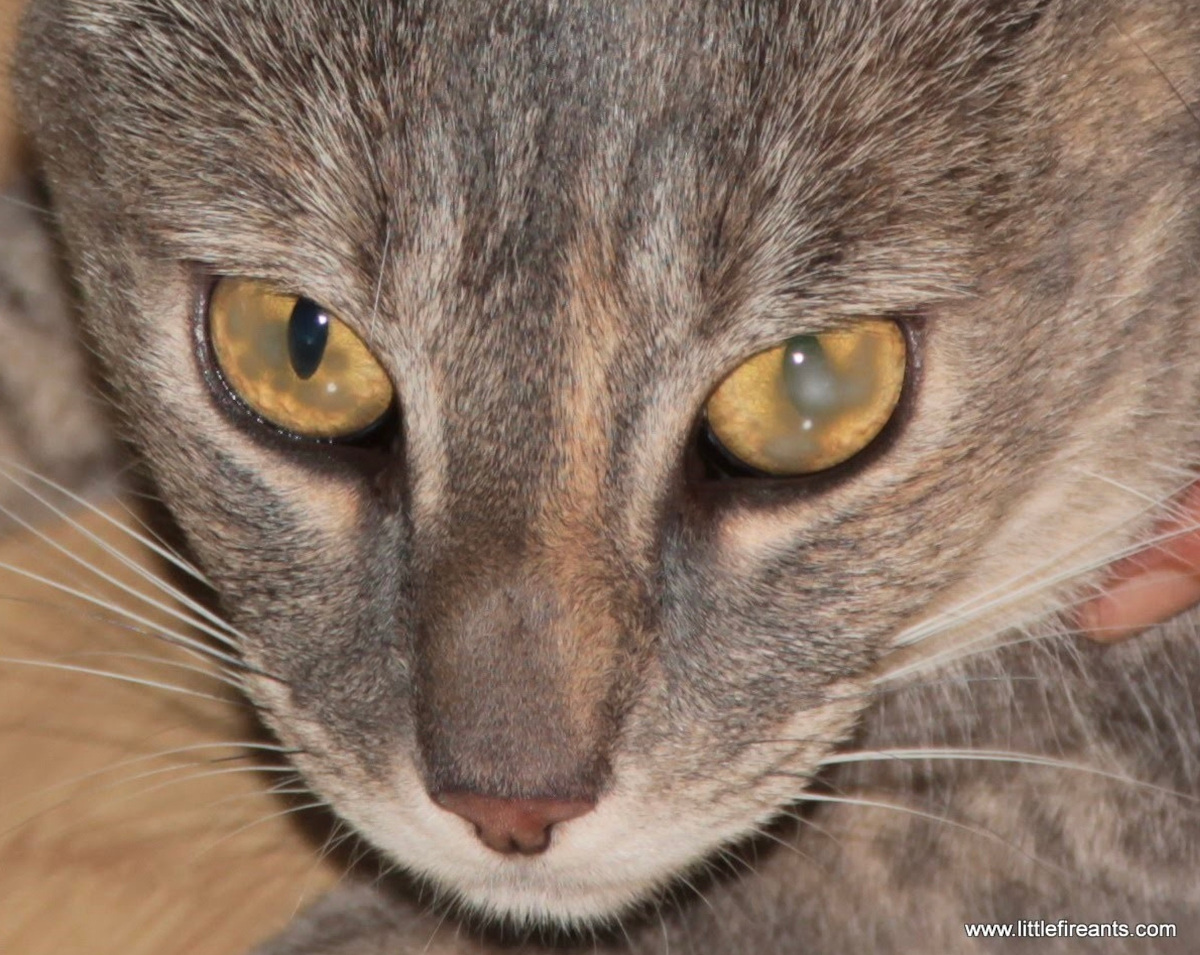(BIVN) – The State of Hawaiʻi is promoting “Stop the Ant Month” in throughout the month of October, with particular attention on the invasive little fire ants, or LFA.
From the Hawaiʻi Department of Land and Natural Resources:
October is “Stop the Ant Month” in Hawaiʻi and a multi-agency effort throughout the month will encourage residents to collect and submit ants from their properties to help detect and control the spread of invasive little fire ants (LFA) and other harmful pest ants that may be new to the state.
LFA is considered among the world’s worst invasive species. LFA are tiny ants, measuring 1/16 of an inch long, and orange in color. LFA move slowly and stings tend to occur when the ants fall from trees or vegetation onto people, or when infestations become so large that the ants move into yards, homes, and businesses. LFA can produce painful stings and large red welts or itchy rashes that last for weeks. Stings to pets’ eyes cause injuries that may result in blindness. This statewide media campaign is funded by the Hawaiʻi Invasive Species Council (HISC) administered by the Department of Land and Natural Resources (DLNR).
DLNR Chair Dawn Chang, who also co-chairs the interagency HISC, said, “the little fire ant is one of those invasive species that can have negative impacts in different areas. LFA can certainly impact native species and our cultural resources, and that’s DLNR’s concern. But they also can impact public health, impact agriculture, impact visitors, and they also have cascading economic impacts. This campaign is one of several ways that the HISC supports individual agency actions on harmful invasive species.”
Hawaiʻi residents play a crucial role in protecting their communities because infestations that are found early enough can be eradicated. Each year, several new LFA infestations are detected by residents participating in this statewide program, each of which prevents millions of dollars in impacts and perpetual costs for entire communities. To date, no new ant species have been found, but the risk is high because ants hitchhike on goods and Hawai‘i imports a high volume of goods from around the world.
Residents may request a free ant-collection kit through the website: www.StopTheAnt.org, or can make their own using household supplies. Residents should collect ants from their properties by using a thin smear of peanut butter on the tips of several chopsticks and leaving the sticks around their property for about 30 minutes to attract any ants in the area. After a half-hour, sticks should be carefully collected and sealed in a zip-top bag and frozen overnight to kill any ants, then mailed or dropped off for identification at any of these locations:
• Oʻahu Invasive Species Committee 808.266.7994, 743 Ulukahiki Street, Kailua, HI 96734
• Maui/Lāna‘i Invasive Species Committee, 808.573.6472, PO Box 983, Makawao, HI 96768
• Kauaʻi Invasive Species Committee, 808.821.1490, 7370K Kuamoo Road, Kapaʻa, HI 96746
• Moloka‘i/Maui Invasive Species Committee, 808.553.4236, P.O. Box 220, Kualapuʻu, HI 96757
• Big Island Invasive Species Committee, 808.933.3346, 23 East Kawili Street, Hilo, HI 96720
• Hawai‘i Ant Lab in Hilo, 808.315.5656, C/O Hawai‘i Department of Agriculture, 16 E. Lanikaula Street, Hilo, HI 96720
• Hawai‘i Ant Lab in Kona, 808.209.9014, c/o CTAHR Extension Office, 79-7381 Old Mamalahoa Hwy, Kealakekua, HI 96750
The Big Island Invasive Species Committee has produced a one-minute video, “How to Collect a Sample,” which shows the step-by-step procedure for collecting ants from your property, freezing, then submitting them for identification. The video is available at: StopTheAnt.org.
Hawai‘i has no native ants and has prioritized the detection of new, harmful ant species, and the management of particularly harmful ant species such as LFA which sting and can cause other harm. LFA are unique because they nest in vegetation and up in trees as well as in leaf litter, unlike the fire ants that have been in Hawai‘i since the 1800s which form nests underground and are common in beach parks and sports fields. Originally from South America, LFA was first detected in the state on Hawaiʻi Island in 1999. Unfortunately, by the time it was detected, the ants had already spread to more than 40 properties around the island and no pesticides or treatment protocol existed for controlling fire ants in trees. The Hawaiʻi Ant Lab was subsequently established to research and develop methods for the eradication and control of LFA. Efforts on Hawaiʻi Island are currently focused on preventing the spread to neighboring islands and in exported goods, managing high-priority sites, and helping the public and communities manage infestations. The focus on all other islands is early detection and control or eradication wherever possible.
There are hundreds of other harmful ant species that are not present in Hawai‘i, but they could arrive by hitchhiking with imported goods. RIFA (Red Imported Fire Ants) is an aggressive, stinging ant native to South America that have invaded the southern United States. RIFA are responsible for billions of dollars in agricultural and infrastructure losses and medical costs. Detecting and responding to new harmful ant species to minimize widespread long-term costs is a priority for the state.
Stop the Ant Month is an annual campaign by the HISC, DLNR, Hawaiʻi Department of Agriculture (HDOA), and the University of Hawai‘i through its projects including the Hawaiʻi Ant Lab (HAL), Coordinating Group on Alien Pest Species, and the Invasive Species Committees on each island.
Request your free ant collection kit and learn more about LFA and the Stop the Ant Campaign https://stoptheant.org/.



by Big Island Video News8:28 pm
on at
STORY SUMMARY
HONOLULU - A multi-agency effort throughout the month will help Hawaiʻi residents to stop the spread of invasive little fire ants and other pests.